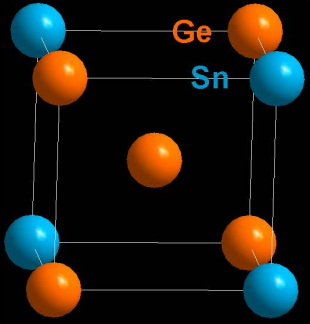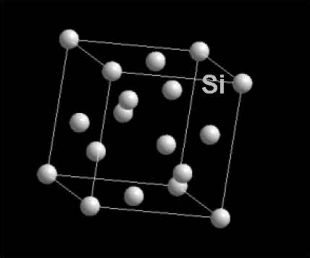Post date:
Researchers have created a new material in a system intensely investigated for efficient light emission applications.
George Serghiou in the School of Engineering together with colleagues from the School of Geosciences at the University of Edinburgh and researchers at three other leading research institutions in Germany and France, removed reactivity barriers between germanium (Ge) and tin (Sn) to create a new bulk cubic material, called GeSn.
Germanium and tin belong to a group of the periodic table – also including carbon (C), silicon (Si), lead (Pb), and flerovium (Fl). The physical properties of this group of elements makes them particularly useful in a range of industrial applications.
Cubic diamond (C) for example, is the hardest material known, used among others, in a multitude of cutting and grinding applications. Cubic silicon (Si) is the material driver of the electronics industry - found in laptops, smartphones, digital cameras and most other electronic devices.
The Ge-Sn system promises advantages over existing materials – for example, in a range of ‘optoelectronics’ devices used in laser technology, optical measurement technologies, photovoltaics (light to electricity converters) and optical fiber communications.
This research also breaks new ground by showing that conventional routes to synthesis are neither followed nor required – in other words, the starting chemical element characteristics and process for new material formation do not abide by established norms for reaction.
This research creates fertile new avenues for developing, exploring and exploiting new materials, from semiconductors to metals. The new cubic GeSn material, stable at pressure, gives rise to a range of alloys on pressure release with optoelectronic and related green energy potential that the researchers are currently investigating.
International spotlights on the work
The research has been published in Angewandte Chemie International Edition in 2021, and is spotlighted internationally by the European Synchrotron Radiation Facility in France (ESRF), a joint research facility supported by 22 countries, by the Deutsches Elektronen Synchrotron (DESY), one of the worlds leading accelerator centres, and by the Helmholtz Research Centre for Geosciences, Germany's National Research Centre for Earth Sciences.
Further information
- Dr George Serghiou, School of Engineering, University of Edinburgh profile page
- Dr George Serghiou, Edinburgh Research Explorer
- Dr George Serghiou homepages
- Extreme Conditions: Materials, Dr George Serghiou




